|
Barrow, Class 25
Around Barrow
Original views from John Broughton
& updated with contributions from other photographers
Our second contributor has provided us with some wonderful views of Class 25s in the Barrow area, varying from dull grimy days in the industrial quarters of Barrow
to the fine coastal landscapes that grace the line north and east of Barrow.

25321 leans into the curve through Arnside station on the evening of June 14th, 1985 with a train of tanks from Whitehaven bound for Merseyside.
The train has just come off Arnside viaduct which spans the estuary of the River Kent at the head of Morecambe Bay. To the right of the locomotive is the trackbed
of the now-closed Hincaster branch which ran from Arnside to Hincaster Junction on the West Coast main line. The tanks of phosphoric acid originated from the Albright & Wilson plant at Marchon (Whitehaven), one of the largest producers of sulphuric acid in the United Kingdom.
Morecombe Bay provides a scenic backdrop (if one gets creative) for much of the route from Lancaster to Barrow, although the WCML at Hest Bank is about the only location
where you might see the ocean from the train between Euston & Carlisle! After turning onto the ex-Furness lines at Carnforth the first estuary is crossed at Arnside, the River Kent
requiring a lengthy low bridge.
If the photographs are organised correctly they should portray a journey from the junction with the WCML at Carnforth heading west towards Barrow and onwards. Location and train information have been
graciously provided by John. Gaps will be filled in as time permits.
Unless otherwise stated all photographs on this page are the copyright of John Broughton.
Meathop
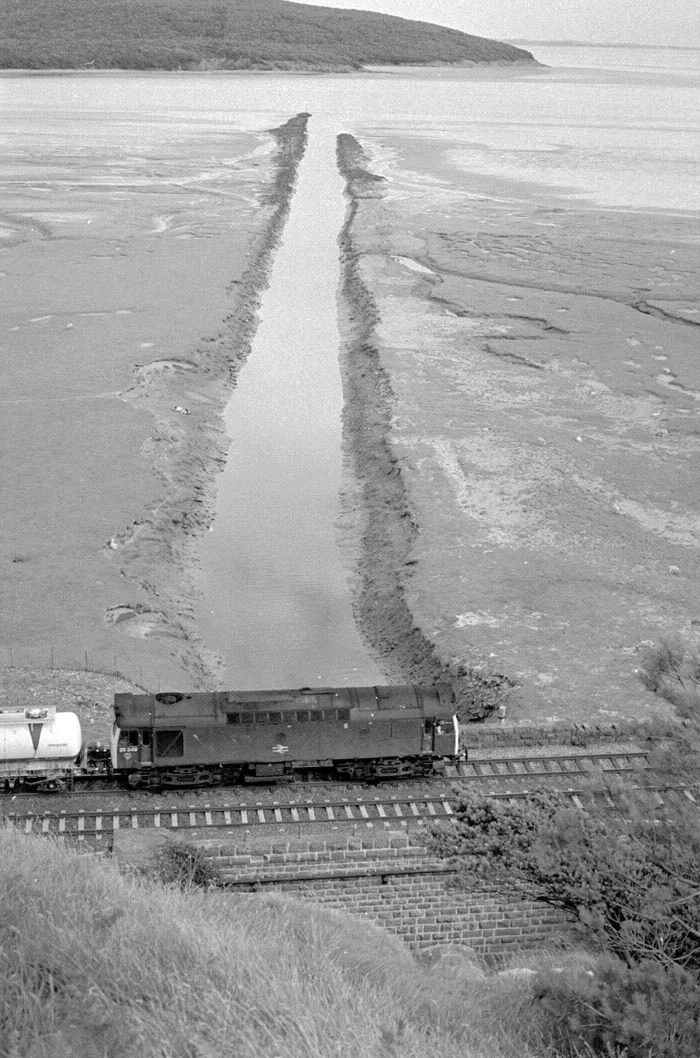
Class 25 No. 25249 crosses a small stream at Meathop near Grange-over-Sands on the evening of July 11th 1986 en route to Whitehaven. The day before 25249 had come to the rescue of failed 45040 working the 08.17 Holyhead - Newcastle at Chester, the Class 25 assisting as far as Manchester, where big sister 47110 substituted. And of course 25249, with 25313 hauled the last Class 25 Railtour less than two months later.

From the same vantage point, 25249 is captured heading west towards Grange-over-Sands.
Grange Over Sands
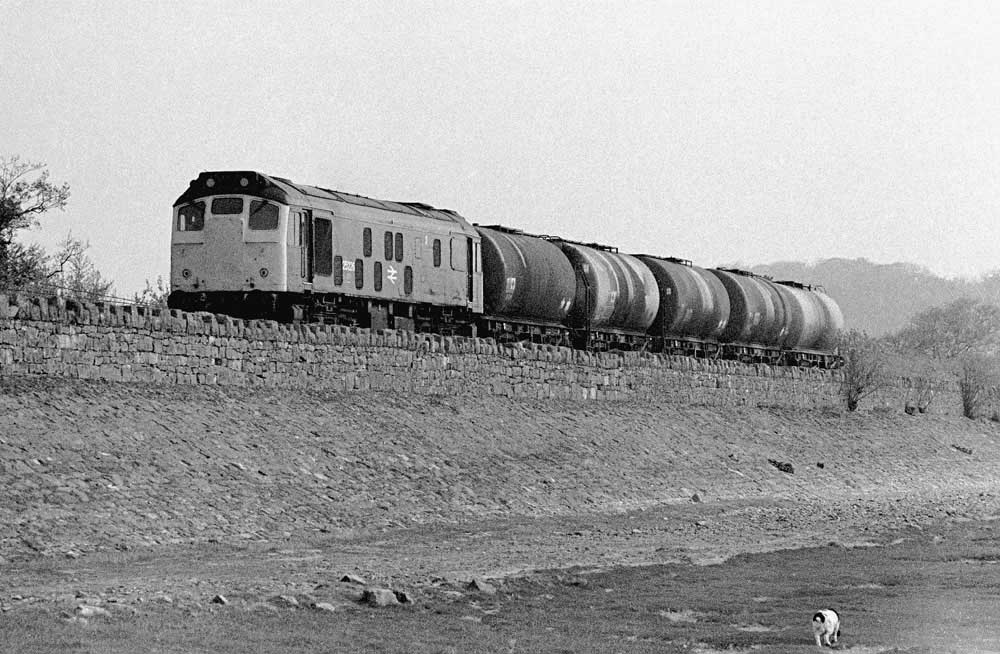
Class 25 No. 25226 at Grange over Sands on April 26th 1984.
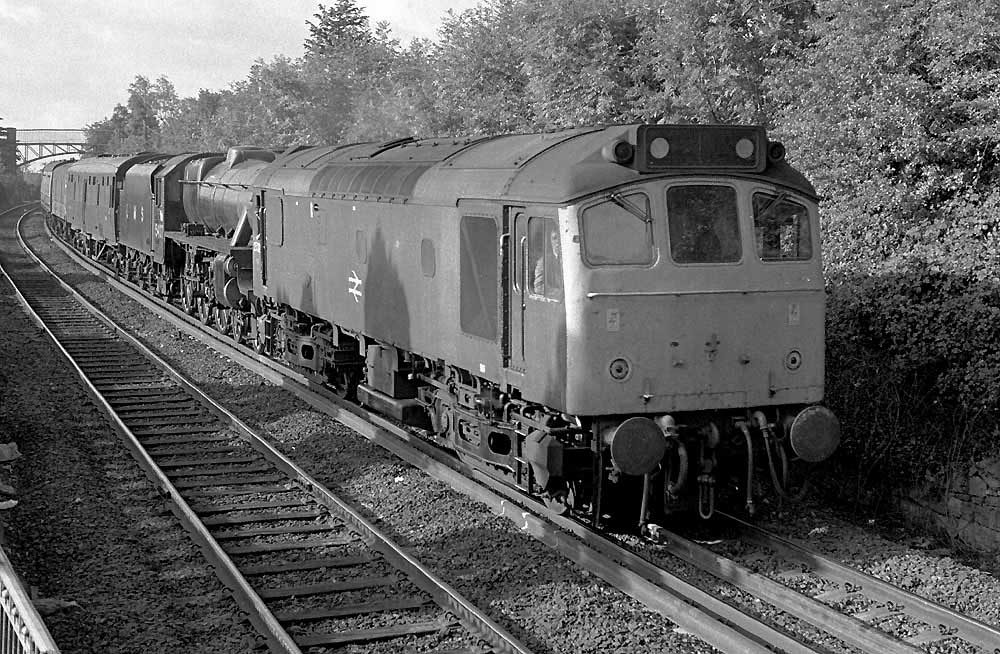
Photograph courtesy Malcolm Roughley.
Grange over Sands September 8th 1984, an unidentified Class 25 hauls a parcels train with a 'Black 5' tucked in behind the locomotive, no doubt a re-postioning move and probably destined for Carnforth.
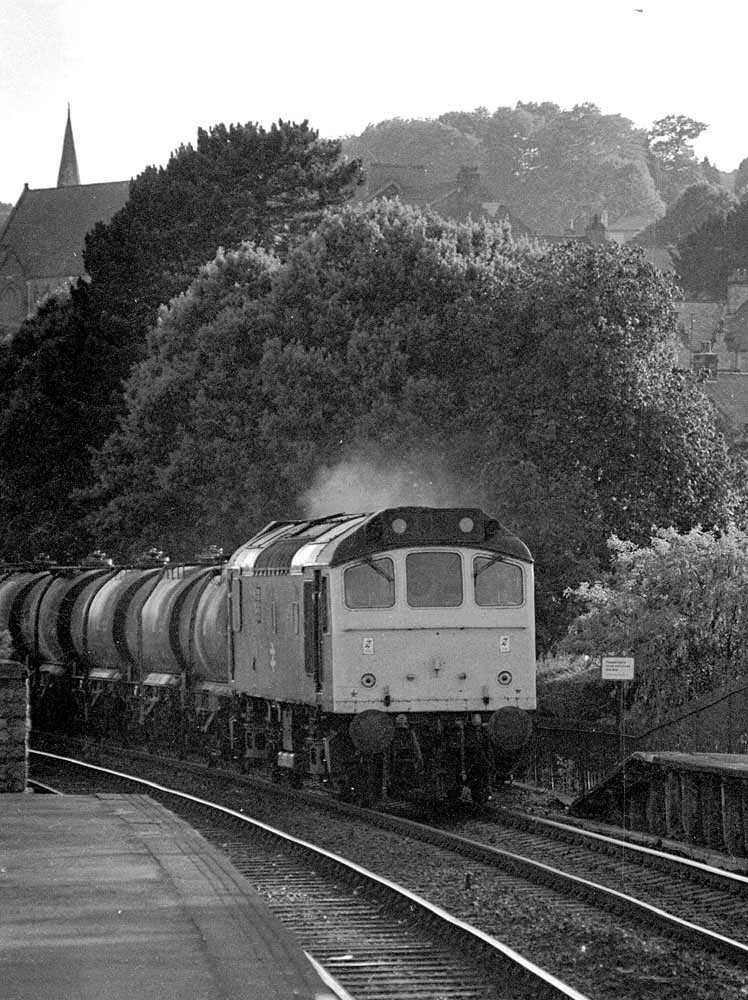
An un-identified Class 25 hurries its train of tanks through Grange over Sands, July 26th 1984.
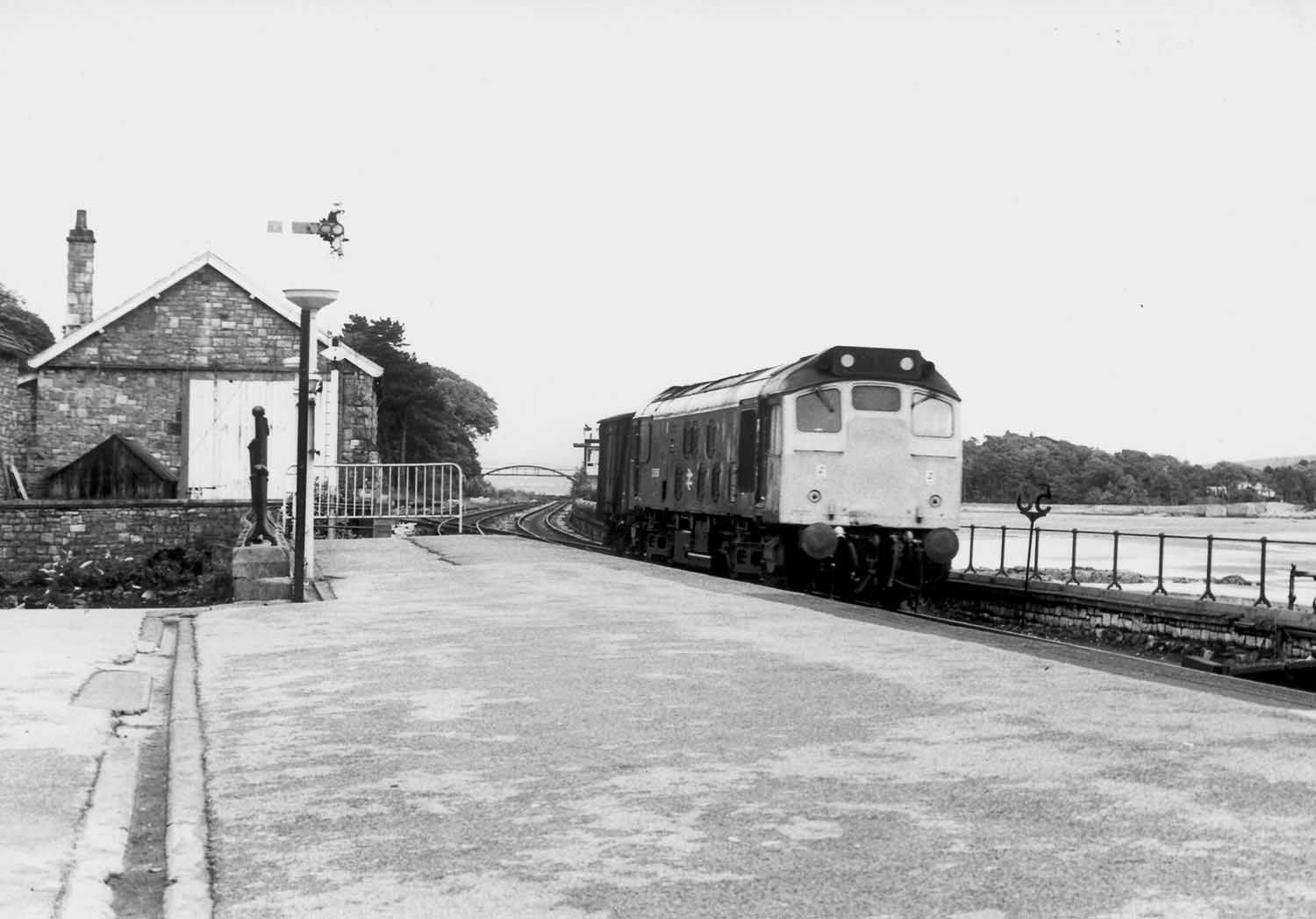
Photograph courtesy Malcolm Roughley.
25050 heads westwards throuh Grange over Sands station towards Barrow with just one van in tow.
Plumpton
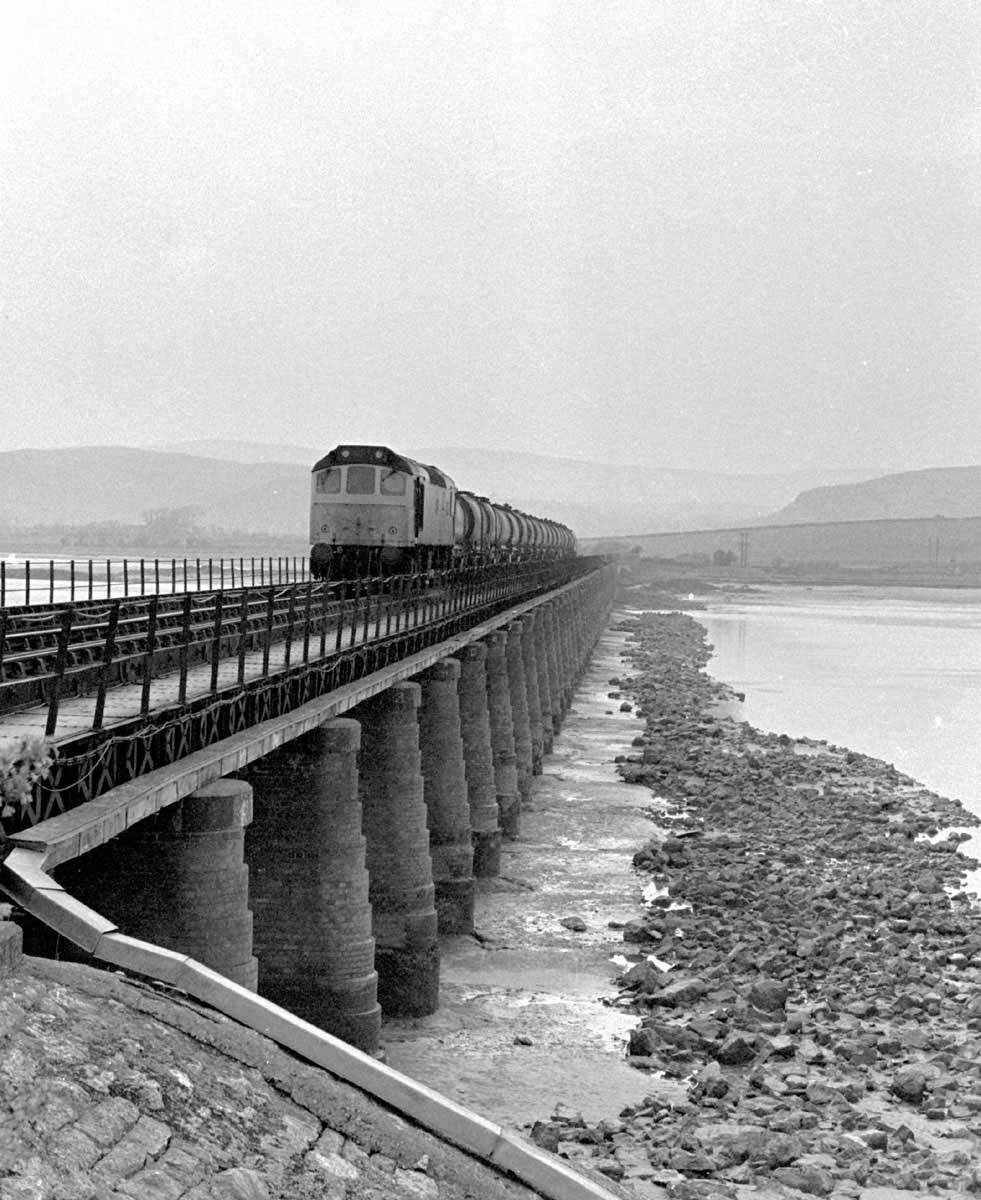
Photograph courtesy John Broughton.
Class 25 No. 25191 runs across Plumpton Viaduct on May 17 1985.
Ulverston
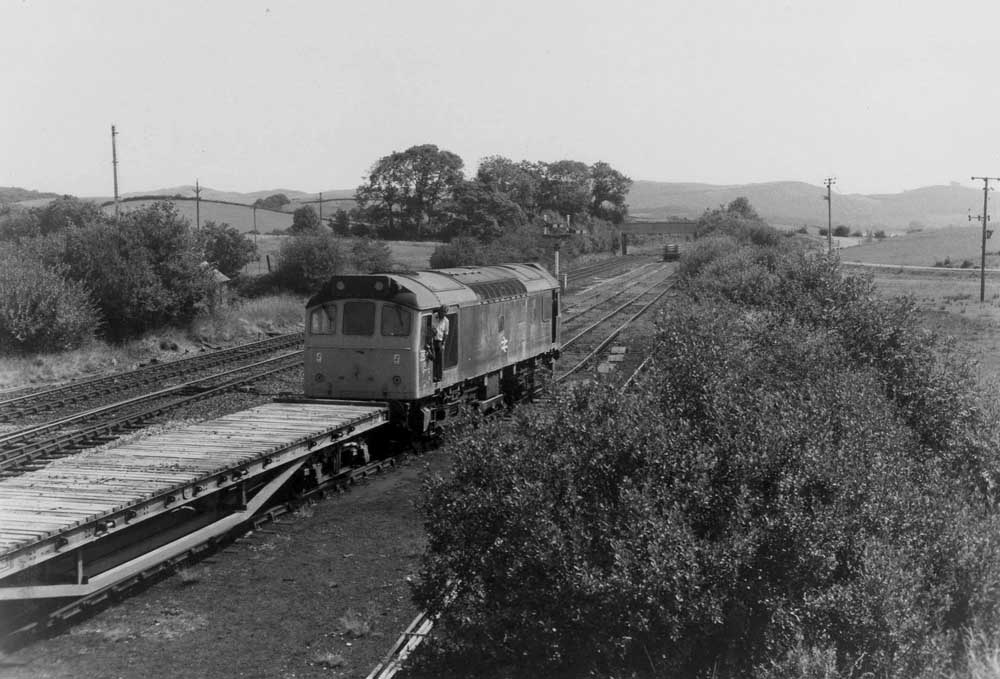
Photograph courtesy Malcolm Roughley.
An unidentified Class 25 works the small yard at Plumpton Jct, date unknown. The view is looking eastwards towards Carnforth.
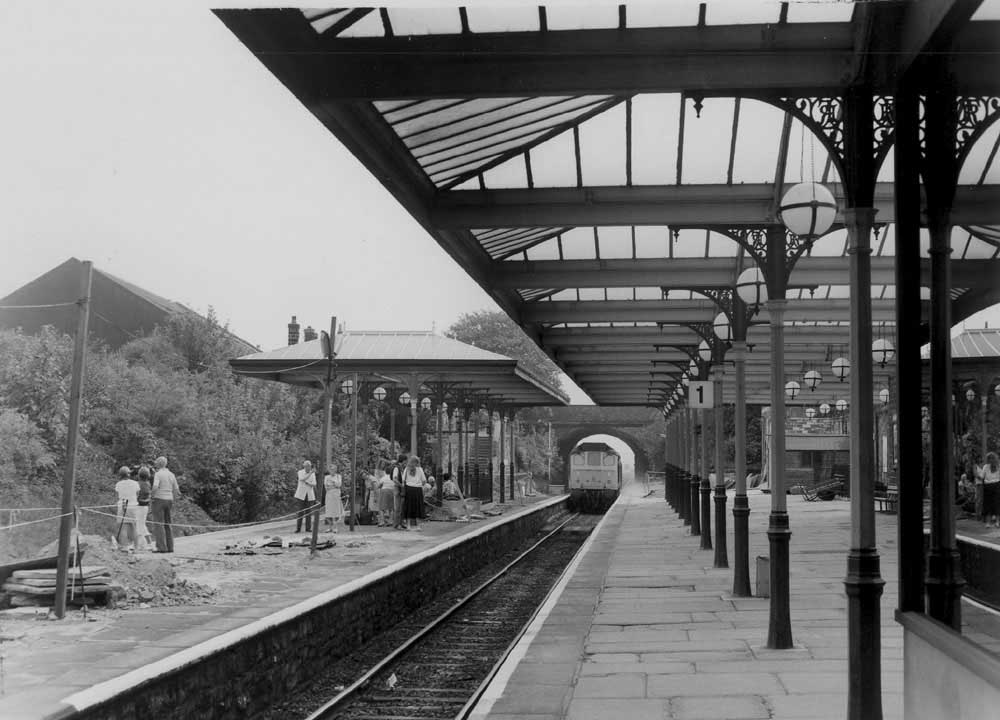
Photograph courtesy Malcolm Roughley.
Looking in the Carnforth direction a Class 25 enters the ornate station at Ulverston, date unknown.

Photograph collection of webmaster.
Looking in the other direction from the above view, 25109 marshalls a lengthy train of empty ballast wagons. In the background is Hoad Hill and the Sir John Barrow monument, Sir John being a native of nearby Ulverston.
Salthouse Jct
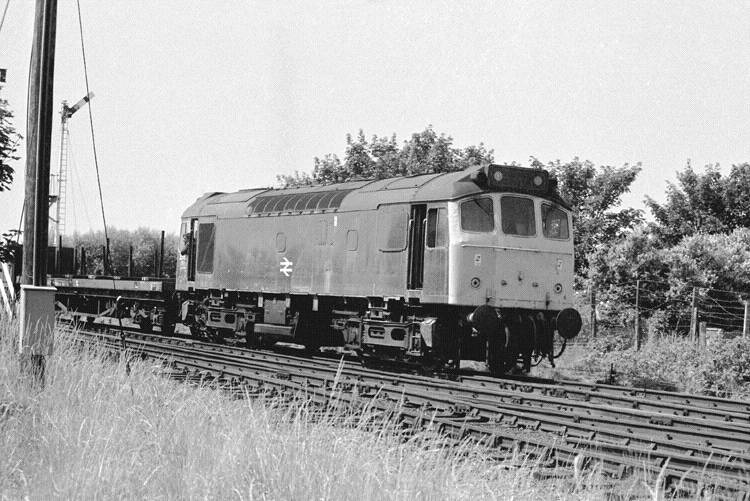
Photograph courtesy John Broughton.
25190 rounds the curve at Salthouse Junction, in Barrow, with an up goods at lunchtime on July 25th 1984. Salthouse Junction (once controlled by its own signal box but now sadly demolished) is the point where the lines for Barrow docks leave the main line. The docks now see very little traffic apart from the occasional nuclear waste train.
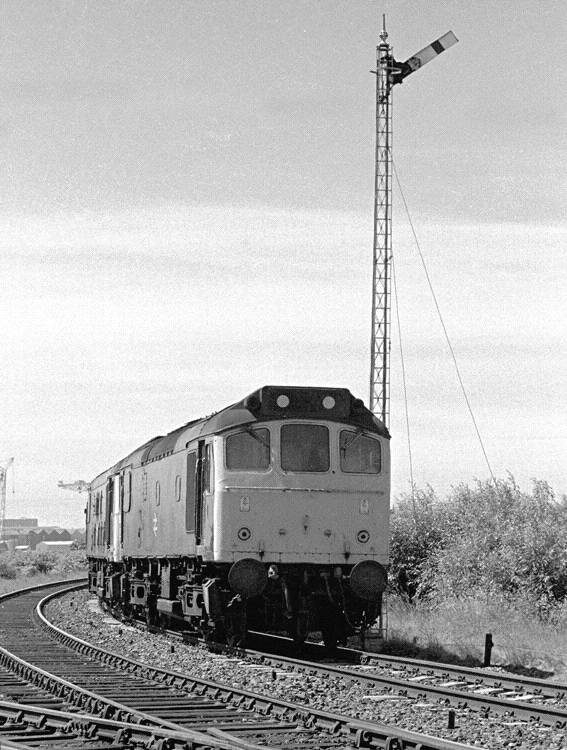
Photograph courtesy John Broughton.
A lunchtime up goods on June 16th 1984, comprised of heavy track panels hauled by 25212 & 25244 are caught just east of Salthouse Junction in Barrow whilst heading for Carnforth where they will gain access to the West Coast main line.

Photograph courtesy John Broughton.
Moving past the photographer from the previous view 25212 & 25244 slowly draw their heavy train towards Salthouse Junction signal box. One wonders about the thoughts of the onlooker peering over the wall, somethings never seem to change.
Barrow Docks
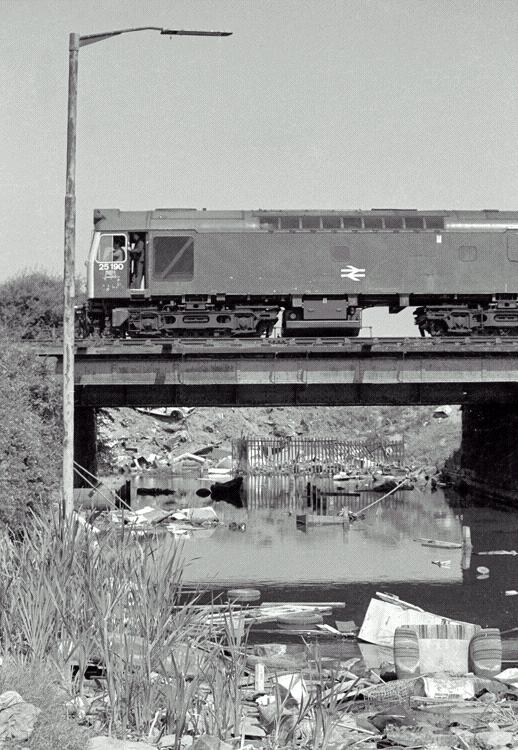
Photograph courtesy John Broughton.
25190 surveys some of the grim scenery found in the Barrow Docks area July 25th 1984. One wonders about the purpose of the street light in this area of abandoned sofas, bedframes and the like!!
Barrow

Photograph courtesy John Broughton.
September 26th 1984 finds 40079 & 25076 close to the football ground at Barrow. 25076 would not see the year out, being withdrawn in November. 40079 faired little better, only surviving until January 1985, being reduced to scrap at Doncaster Works the following month. 25076 lingered until August 1986 when the end came at Swindon Works.
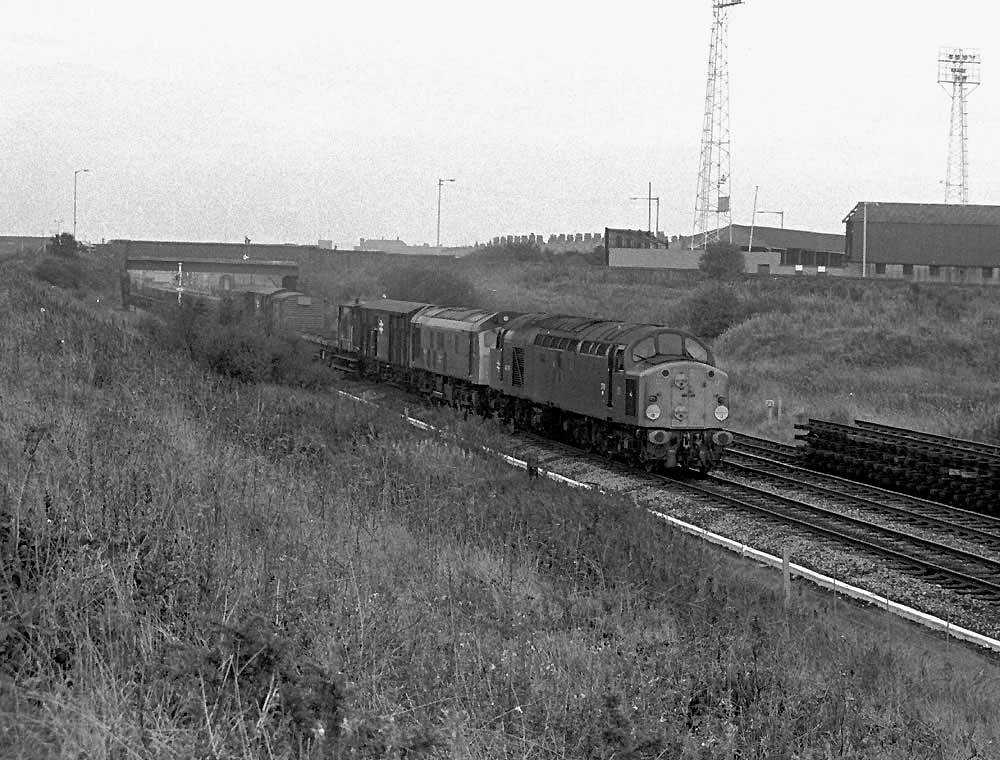
Photograph courtesy John Broughton.
Another view on September 26th 1984 of 40079 & 25076 as they pass by the Barrow football ground.

Photograph courtesy Barry Daniels.
25106 with sleeper coaches at Barrow on April 2nd 1983.
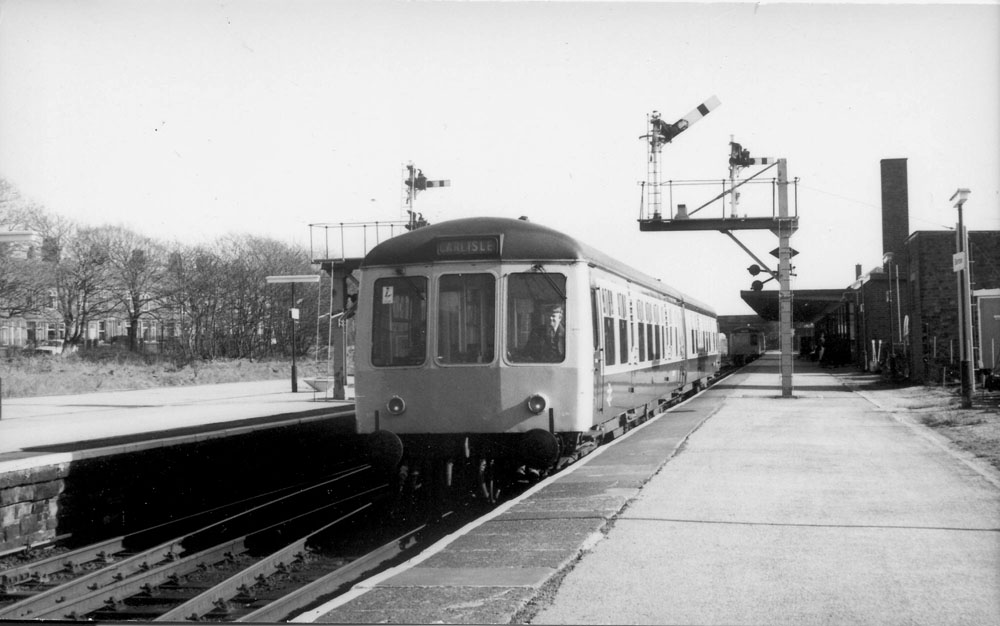
Photograph collection of webmaster.
A Barrow - Carlisle passenger service leaves Barrow sometime during 1982.
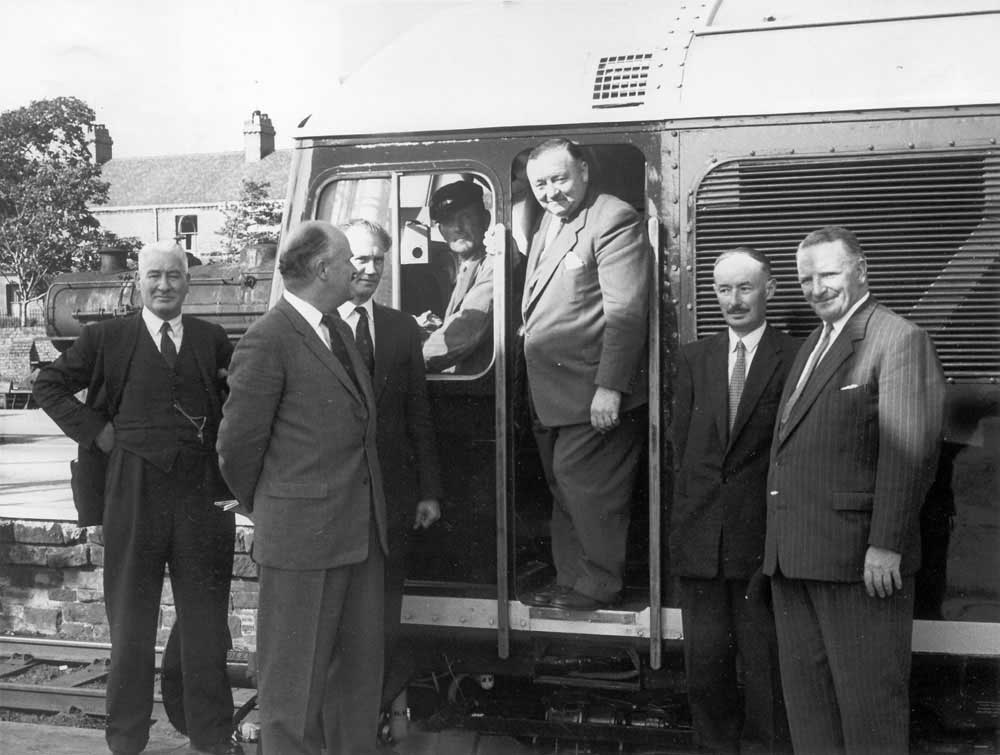
Photograph collection of webmaster.
Barrow was also the home of Vickers Armstrong, which played a major part in the construction of the Sulzer engines. From time to time completed locomotives came to Barrow for inspection by a variety of senior people. Standing in the cab doorway is Mr. A Storey, Works General Manager whilst on the extreme right is Mr. R Keay, Engineering Works Manager. The locomotive is D5125, new from Derby Works during July 1960, which must provide a clue to the date of this photograph.
Duddon Viaducts

North west of Barrow 25051 is seen heading light engine across Duddon viaduct at Foxfield on the Cumbrian Coast line on June 28th 1985. The locomotive is probably returning from taking a train up the coast perhaps to the large British Nuclear Fuels plant at Sellafield. Duddon sands and the estuary of the River Duddon cause another considerable detour for rail & road.
Ravenglass
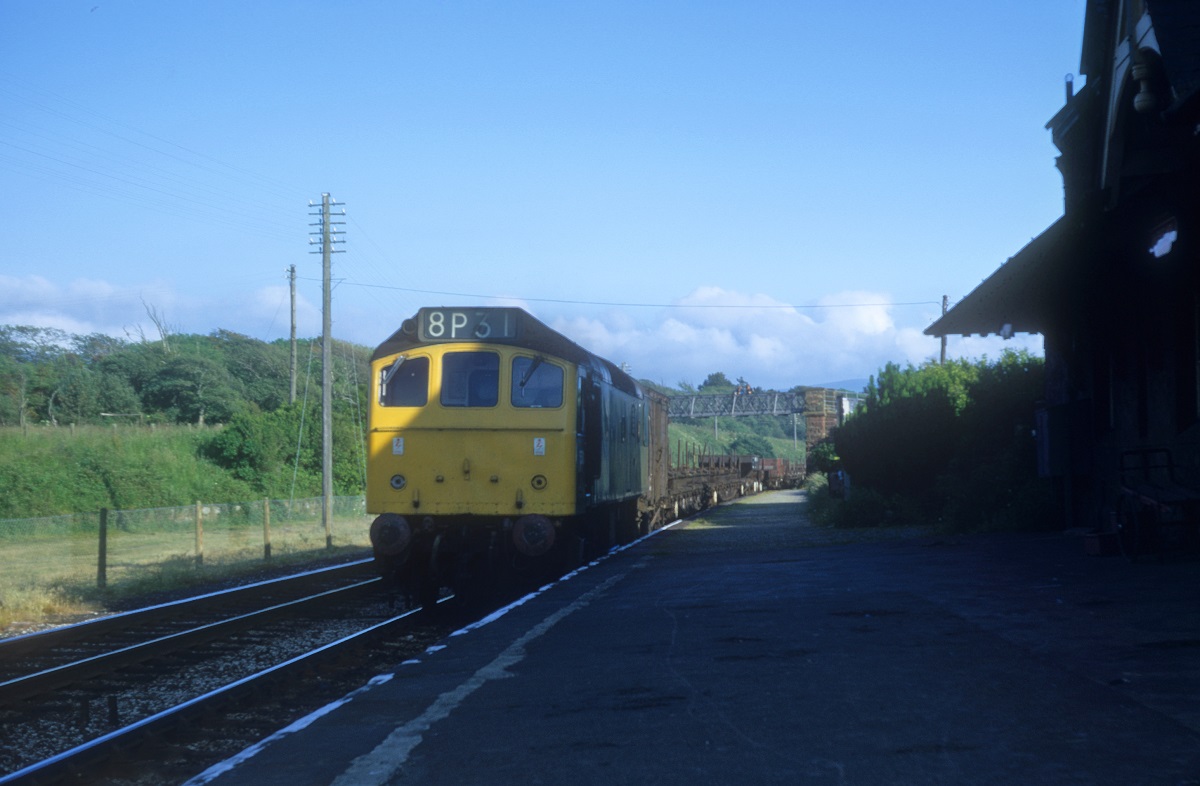
Photograph courtesy Doug Nicholls.
A fine summers day during July 1972 finds an unidentified Class 25 heading north through Ravenglass station with a with a freight train.
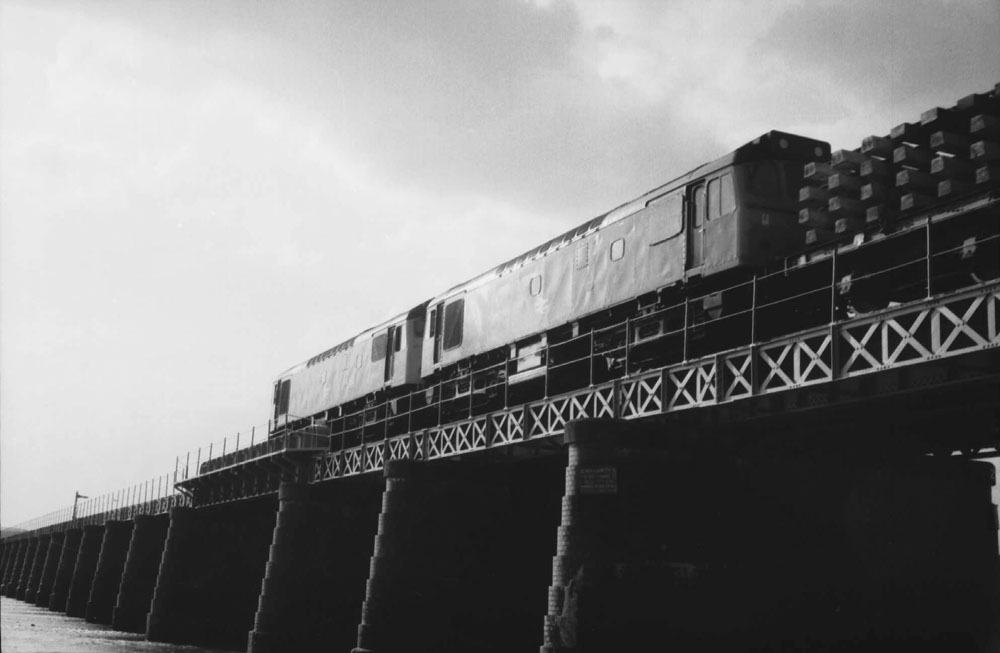
Photograph collection of webmaster.
A pair of Class 25s with a track panel train cross Ravenglass viaduct, date unknown.
Sellafield
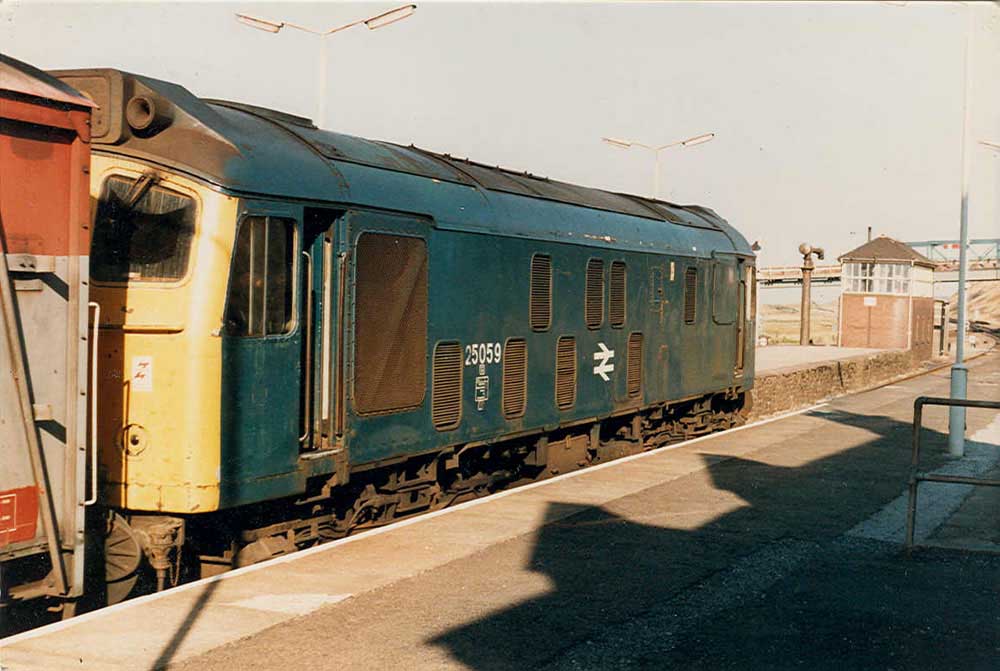
Photograph courtesy Ian Marsh.
25059 at Sellafield.
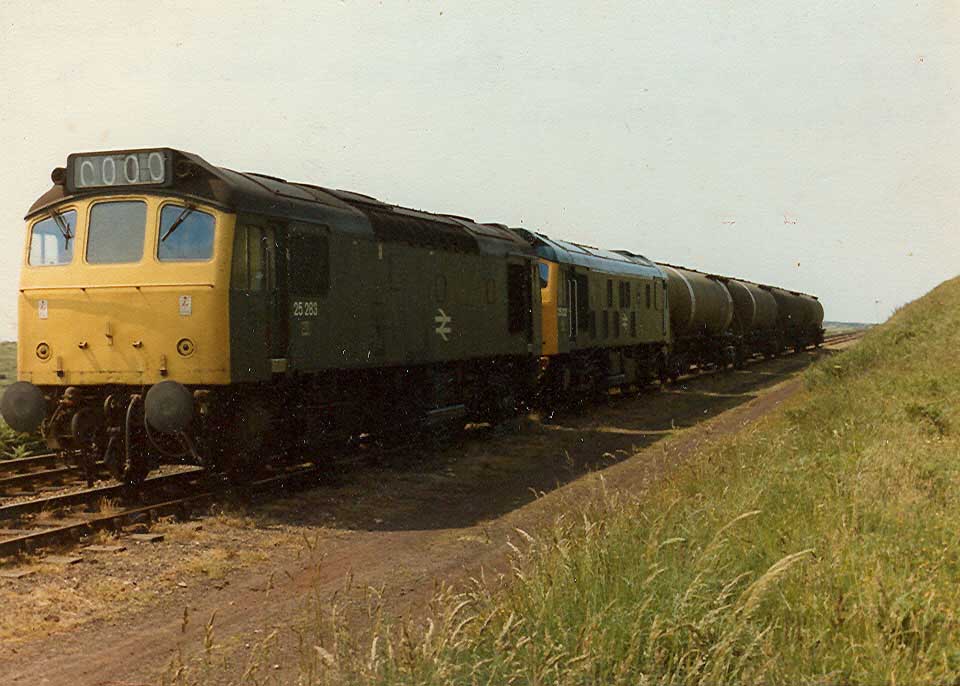
Photograph courtesy Ian Marsh.
25283 & 25222 stand in the North Sidings at Sellafield with the remains of its train of bulk tankers. The previous day the rear of the train had derailed very badly at Braystones (see view below).
Braystones
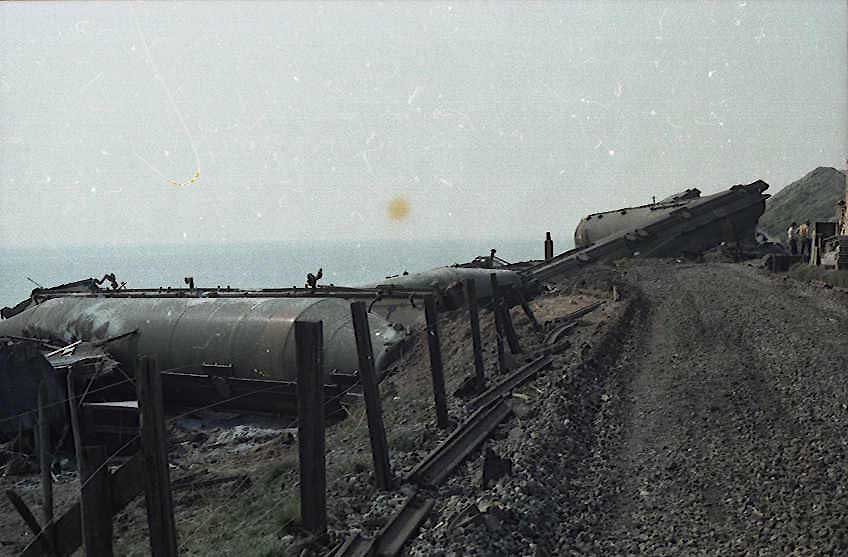
Photograph courtesy Ian Marsh.
Trouble at Braystones, with a train of derailed tankers awaiting the clean up crew. The 100ton bogie tankers were filled with sodium tripolyphosphate, the extent of the damage closed the line for nine days.
On the evening of Monday July 4th 1977 the 6E32 Corkickle (Marchon Products) - West Thurrock with 25283 & 25222 derailed seven of its ten bogie soda ash tanks at Braystones. The tankers were loaded with sodium tripolyphosphate, a chemical used in the manufacture of detergent. Apparently a small bridge failed as the train was crossing derailing many of the tankers, sending some crashing down onto several beach cottages on the west side of the line. Fortunately the bungalows were not occupied at the time, ironically these bungalows were built by the Furness Railway. A considerable length of track was damaged, a bus service operated between St. Bees & Sellafield, it took nine days for the track to be repaired and normal service resumed.

Photograph courtesy Ian Marsh.
Trouble at Braystones, looking south at track level with one of the derailed wagons tilted at a dramatic angle.

Photograph courtesy Ian Marsh.
Trouble at Braystones, looking towards the ocean with two upturned tankers in view and what appears to be the remains of one of the seafront bungalows off to the right.
St Bees

Photograph courtesy John Broughton.
On May 27th 1986 an un-identified Class 25 hugs the coast on its north bound journey with three empty nuclear flasks after processing at Seascale. The unstable nature of the coastal cliffs here is clearly shown here with the 'stepped' slope of the cliffs above the locomotive.
Corkickle
After the dramatic scenery along the line in the St Bees area, the line took the landward route around the back of St Bees Head on its approach to Workington. On the south side of Workington was Corkickle, the site of a small yard which at one time served three branches. The yard had three running roads, the up & down main and the permissive which was bidirectional and signalled for such. The branch to the north reached Workington, Preston Street, to the south ran the branch to Moor Row. And close by Corkickle yard was 'The Pit' which served a local chemical company. A steep inclined plain served some sidings until these closed in 1986. Moor Row succumbed about 1981 when West Cumbria's last remaining iron mine closed, this coincided with the closure of Workington work's blast furnaces. And when Preston Street closed in the mid 1990's Corkickle yard lost its last reason for being.
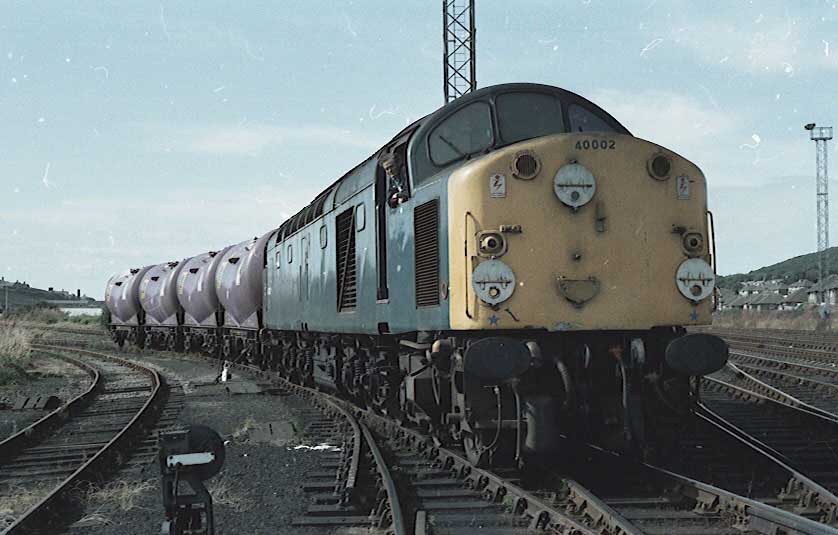
Photograph courtesy Ian Marsh.
40002 was 'going through the road' at Corkickle Yard. Its coming off the 'Pit', the location of three sidings at the foot of a very steep inclined plane, which was rope worked.
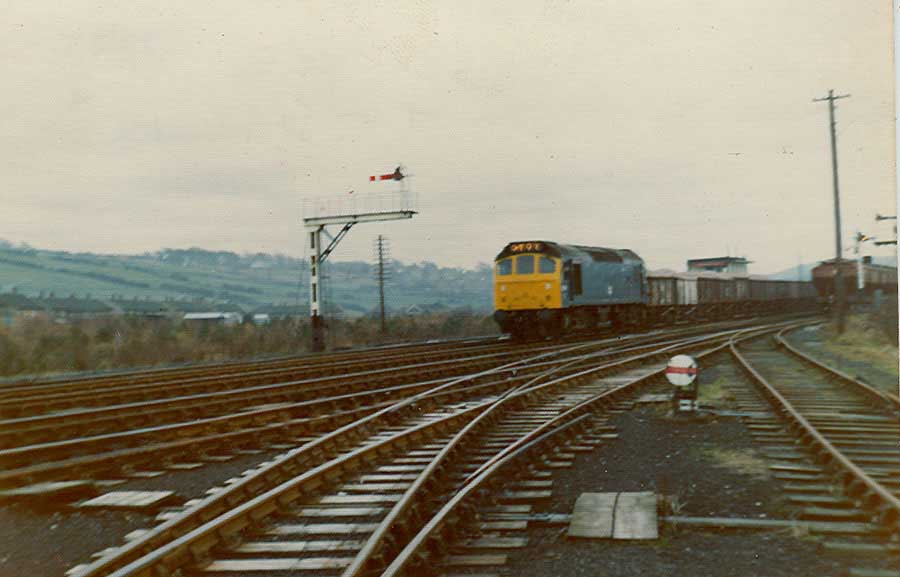
Photograph courtesy Ian Marsh.
An unidentified Class 25 heads north past Corkickle Yard on a gloomy day. In taking this view the photographer is standing where the purple wagons are in the view below. Behind the train is Corkickle No.1 signal box.
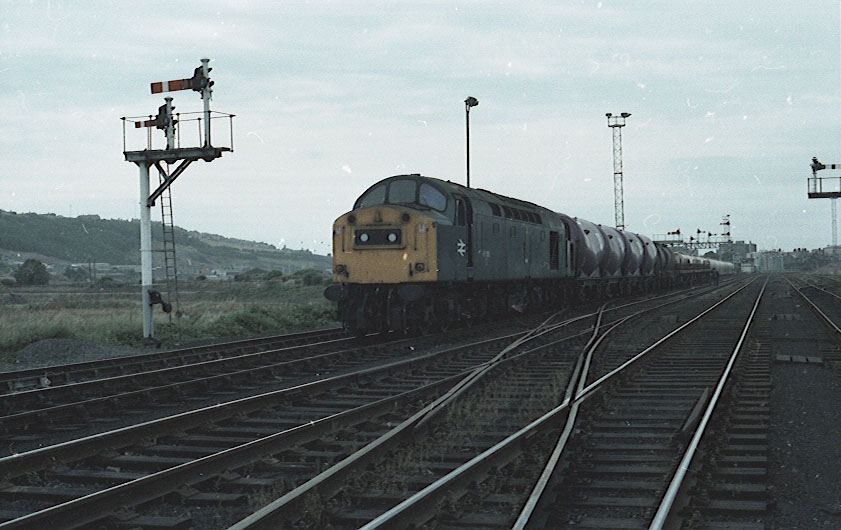
Photograph courtesy Ian Marsh.
40060 in charge of a Workington - Dover service, which attached wagons at Corkickle. The purple tanks were conveying powered sodium-tripoly-phosphate for a soap powder factory at Warrington Bank Quay. Corkickle No.2 signal box is just visible in the far distance.
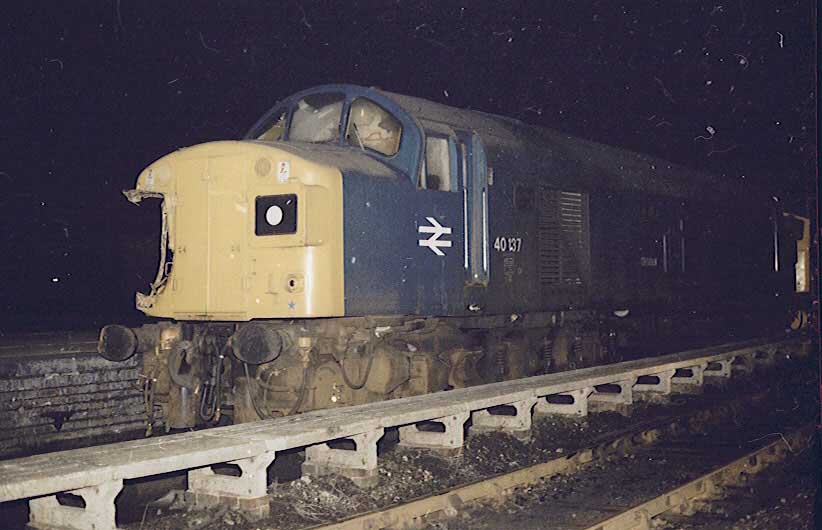
Photograph courtesy Ian Marsh.
40137 stands at Workington with damage to the secondman's side of the locomotive. A signalman's error at Corkickle led to the damage to the Class 40. It was removed to Workington, then on to Kingmoor where it was condemned and sent down to Swindon Works for breaking up, which took place during December 1981.
When Ian started on the railway there were four Class 08 shunters allocated to Workington. One of these shunters was outstationed at Corkickle from Monday morning to Saturday lunch time. This shunter was eventually replaced by a trip working and then later, by the train engines carrying out any necessary shunting.
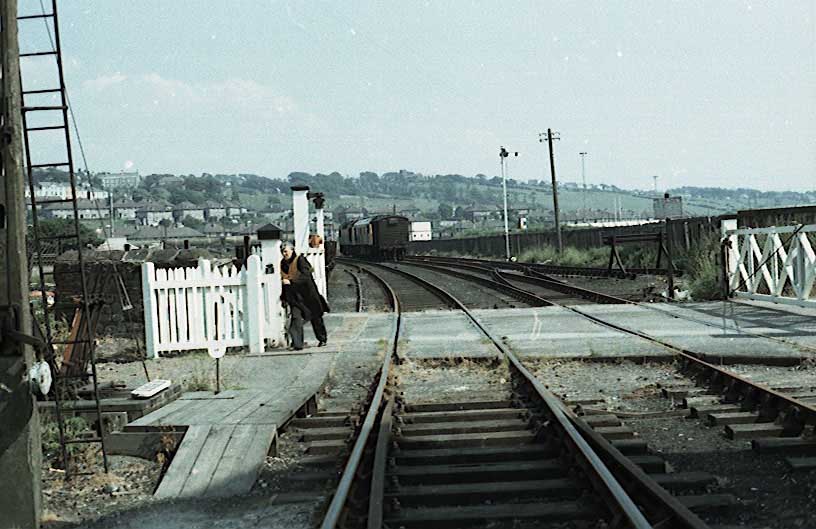
Photograph courtesy Ian Marsh.
Preston Street level crossing looking south towards Corkickle, with Corkickle No.2 signalbox visible in the distance. A pair of Class 25s and a single wagon are just visible, possibly the same pair in the view below.
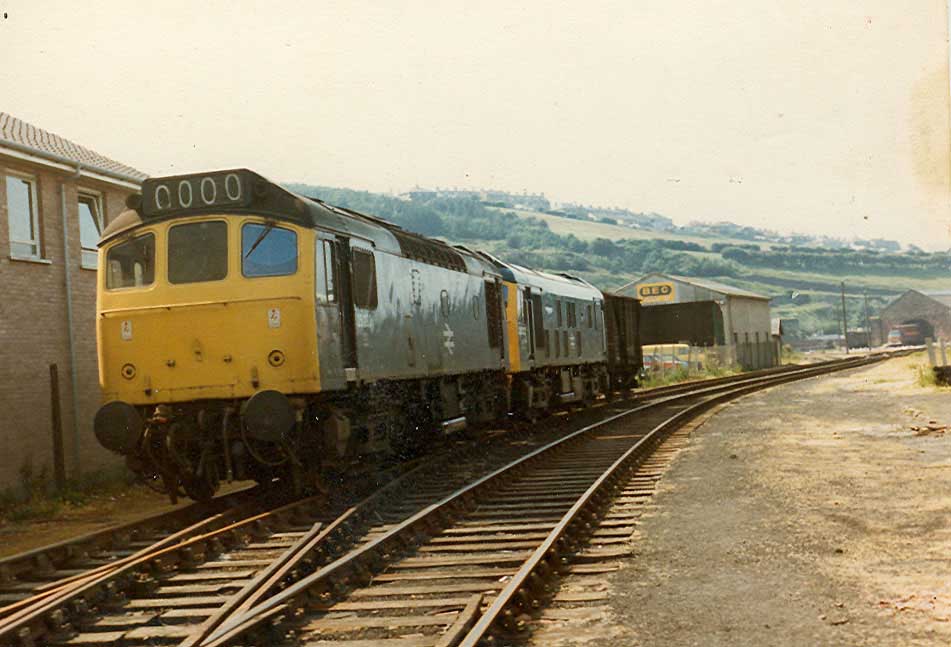 Photograph courtesy Ian Marsh.
25283 & 25222 at Whitehaven Preston Street prior to working a train of 102ton bulk powder tanks southwards later in the day. This train would come to grief at Braystones when a number of the tanks derailed (see view above).
Photograph courtesy Ian Marsh.
25283 & 25222 at Whitehaven Preston Street prior to working a train of 102ton bulk powder tanks southwards later in the day. This train would come to grief at Braystones when a number of the tanks derailed (see view above).

Photograph courtesy Ian Marsh.
08465 and a box van await access to the National Carriers depot, which originally was the Furness Railway's northern terminus at Preston Street. Activity at this yard included the transfering of powder from road tankers into the purple rail tanks mentioned elsewhere, the yellow compressor behind the van was used to make this possible.
Returning to the main line the view below, taken looking southwards from Corckickle station's only platform shows more of the 100t tanks containing powder which are awaiting departure to the south. It was tanks similar to these that became derailed at Braystones, see views above.
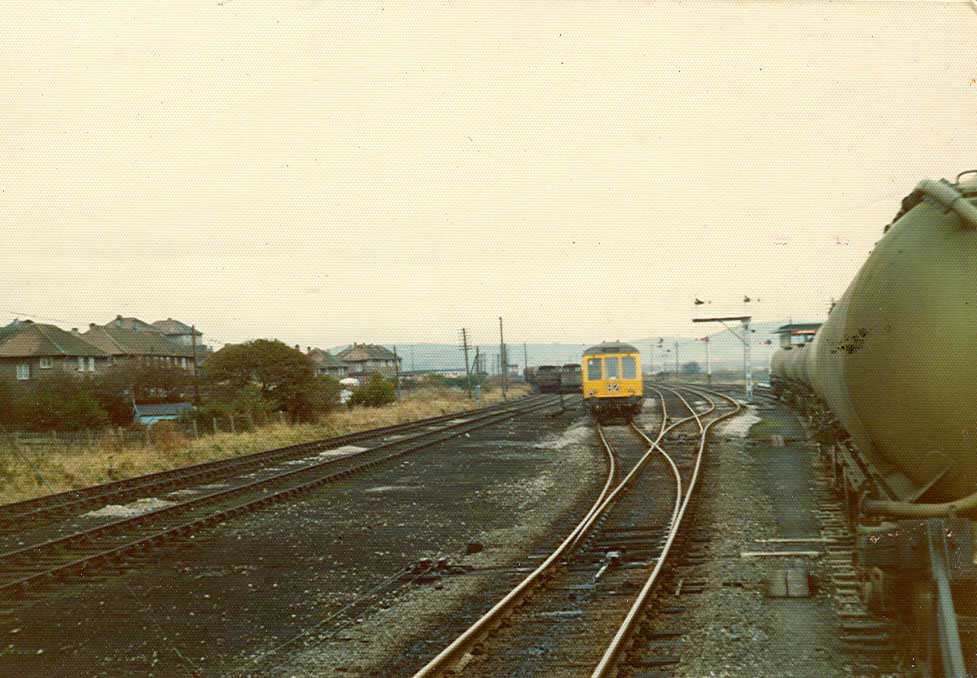
Photograph courtesy Ian Marsh.
Looking south from Corkickle station. The Class 108 DMU is heading south, having just left the single line section which ran from Whitehaven station south to the junction in this photograph.
At the north end of Corkickle yard the main line returned to single track as it passed Corkickle station. At this point the line enters the 1,322 yard Whitehaven Tunnel which doglegs to the west before returning to daylight at Whitehaven station. The tunnel was bored through the local sandstone and left rough hewn until about 1928 when the LMSR began a project to smooth the bore. This project was not completed until 1958, reducing the length to 1,291 yards.
Whitehaven
After leaving the tunnel the line immediately entered Whitehaven station where it also became double track. The opening of the tunnel in 1852 rendered the original Whitehaven, Preston Street terminus of the Furness Railway somewhat redundant. It would continue to see use in a secondary goods role into the 1990's.
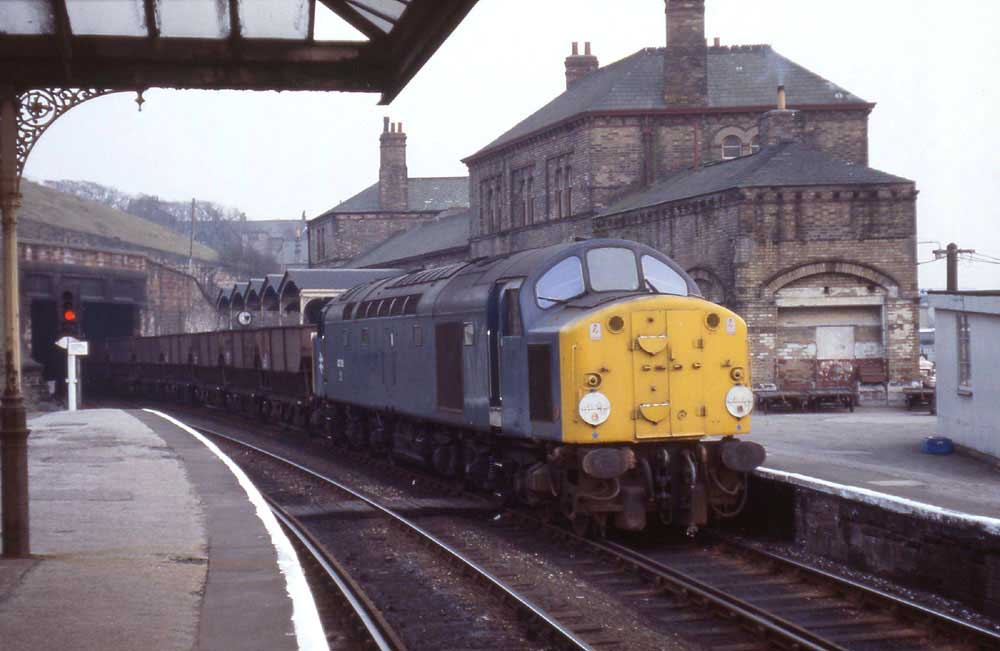
Photograph courtesy Brian Daniels.
Whitehaven station on April 19th 1978 looking southwards as 40108 comes out of the tunnel with a northbound working. Ian comments the train could be bound for Bransty dock, Derwent or Maryport for reloading to Huncoats power station at Barrow. The 21ton hoppers were known locally as north east hoppers, due to their extensive use on former LNER metals.

Photograph courtesy Ian Marsh.
Bransty signalbox looking in a southerly direction with Whitehaven station to the left, the entrance to the tunnel is just visible. The diesel multiple unit had worked into Corkickle on a rugby special. These units (Cravens Class 105?) were banned north of Maryport being standard stock (9'3" width without window bars) and had no doubt worked in from the south.
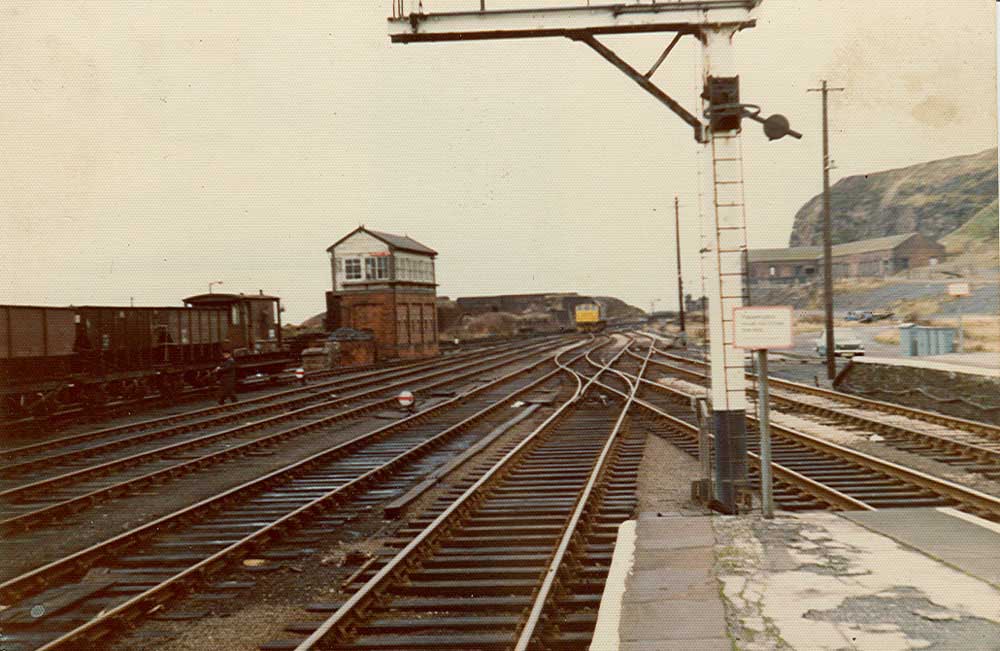
Photograph courtesy Ian Marsh.
A view looking north at Whitehaven Bransty as a distant 25191 runs round its train of 21ton wagons that have been brought in from Derwent as either the 9T90 or 9T91.
The diesel multiple units which normally worked the Workington/Whitehaven services were the Kingmoor allocated Class 108's which were 9 feet 2 inches wide with bars on the windows.

An angry sea pounds the coastline in the Whitehaven area on May 27th 1986. As the storm moves eastwards an un-identified Class 25 drifts south towards Whitehaven, its already pitted and rusting bodywork getting an unhealthy covering of saltspray from the storm tossed waves.

A northbound multiple unit receives a good coating of saltspray as it journeys north of Whitehaven on May 27th 1986. Shortly after these views were taken the line was closed temporarily until the storm abated and the integrity of the line could be checked.
Whitehaven Harbour

Photograph courtesy Ian Marsh.
A North british built 0-4-0 shunter works the NCB operated lines at Whitehaven Harbour sometime around 1980. The substantial roofless walls behind the shunter belong to the former LNWR Bransty carriage sheds. At this time the site was operated by a bus company for the fuelling, washing and stabling of buses. It has now all been swept away to make way for that great icon of the late 20th century - a car park, this one for Tesco's shoppers.
Page last updated October 26th 2016
Return to Picture menu
|










































